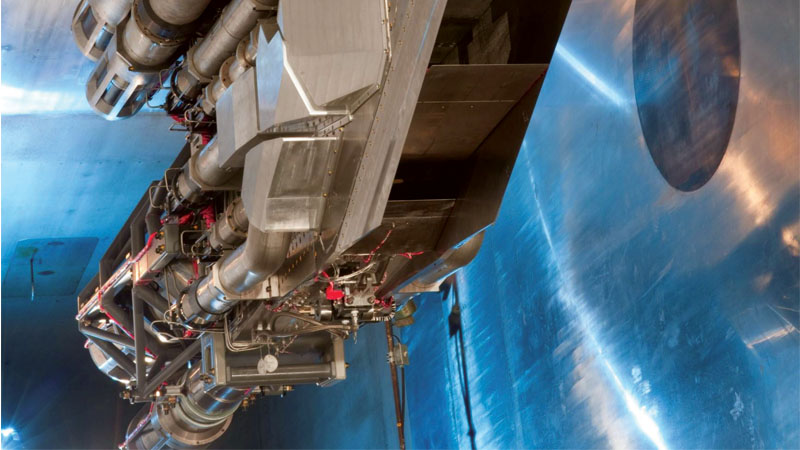Stay Up to Date
Submit your email address to receive the latest industry and Aerospace America news.
The High-Speed Air Breathing Propulsion Technical Committee works to advance the science and technology of systems that enable supersonic and hypersonic air vehicle propulsion.
High-speed air-breathing propulsion technology is rapidly maturing to enable flight vehicles with revolutionary capabilities.
This year saw important advances along a number of fronts: conceptual evaluation, analysis, hardware fabrication, ground testing and near-term flight test preparations.
With a strong foundation built upon the X-51A WaveRider program, the U.S. Air Force Research Laboratory, or AFRL, continued to advance scramjet and ramjet propulsion technologies under the High Speed Strike Weapon program. Preparations for direct-connect testing of two unique powerhead concepts through the Medium Scale Critical Components program are underway. These powerheads employ a common isolator and combustor and have mass captures approximately 10 times that of the X-51A engine. The common isolator and combustor hardware were fabricated and delivered to Arnold Engineering Development Center in Tennessee and will support the initial engine tests scheduled for early 2017.
In February, NASA’s Glenn Research Center and AFRL completed phase 3B testing of the Combined Cycle Engine Large-Scale Inlet Mode Transition Experiment. Test results were used to characterize mode transitions at several transition speeds less than Mach 3.5. The AFRL/NASA team validated autonomous mode transition control laws and algorithms to enable smooth and stable inlet operation. They also investigated inlet distortion mitigation strategies during mode transition. Phase 3C is underway with the main goal of reducing risks for phase 4 testing, scheduled to start in 2018.
Researchers at NASA’s Langley Research Center in Virginia continued to support development of numerical methods, ground testing and systems analysis relevant to hypersonic air-breathing propulsion, including formulation of the new Hypersonic Technologies Project. NASA has established a new facility funding model in which experimental efforts will be conducted at significantly reduced costs to NASA researchers and collaborators.
VULCAN-CFD, or Viscous Upwind Algorithm for Complex Flow Analysis-Computational Fluid Dynamics, development continues with the addition of hybrid structured-unstructured grid capabilities, which was to be ready for testing by the end of the year. As part of the Enhanced Injection and Mixing Project, experiments began in the Arc-Heated Scramjet Test Facility at Langley to better understand the physics of injection and to develop mixing enhancement strategies.
Progress on the Hypersonic Flight Research program, or HIFiRE, continued. In June, Douglas Dolvin, with the High Speed Systems Division at AFRL, addressed the status of the program and provided a review of plans for 2017. In May, he described milestones achieved in previous flights, including the completion of the flight vehicle critical design review. HIFiRE plans include evaluation of control strategies for hypersonic re-entry and cruise of shock-on-lip waverider design, characterization of adaptive control laws for lifting body configurations, and the investigation of hydrogen scramjet engine operability. These tests will be conducted at the Royal Australian Air Force Woomera Test Range in South Australia in March 2017.
Other developments are on the way. “In the future, beyond just the rocket plane, we can incrementally introduce further performance and reusability enhancements, and I think chief among them would be the addition of air-breathing propulsion,” said Tom Markusic, CEO and founder of Firefly Space Systems, during a panel discussion at AIAA’s Propulsion and Energy Forum in Salt Lake City in July.
Progress made this year by leading industry and government groups may enable the great potential of high-speed air-breathing propulsion to be realized. ★
Stay Up to Date
Submit your email address to receive the latest industry and Aerospace America news.




